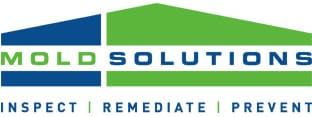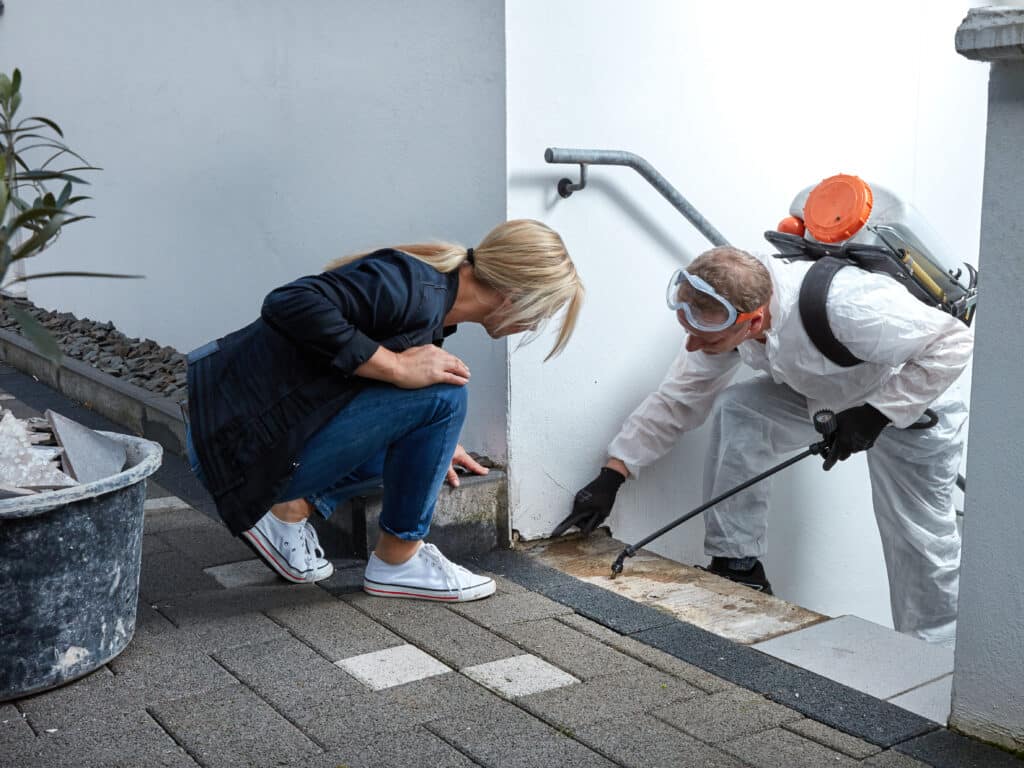Table of Contents
Mold Sickness Symptoms
There is evidence that certain types of mold can produce chemicals that are toxic to humans. These chemicals are called mycotoxins. Some mycotoxins can cause serious health problems. The most commonly reported symptom of exposure to mycotoxins is respiratory problems, such as wheezing and difficulty breathing. Other symptoms include skin irritation, headaches, fatigue, and nausea. If you think you may have been exposed to mycotoxins, it’s important to see a doctor right away.
What do mycotoxins do to humans?
Mycotoxins are poisonous substances that are produced by certain types of fungi. These toxins can cause a range of health problems in humans, including skin rashes, digestive problems, and respiratory problems. Some mycotoxins can even cause cancer. Exposure to mycotoxins can occur through contaminated food or water, or through inhalation of dust particles that contain the toxins. In some cases, mycotoxins can also be found in building materials, such as insulation or wallpaper. Treatment for mycotoxin exposure typically involves removal from the exposure source and supportive care. In some cases, specific medications may be used to treat the health effects of mycotoxins.
There are many different types of mold, and not all of them will produce mycotoxins and cause symptoms of mold poisoning. Some of the most common mold types that have been linked to mycotoxin production include Stachybotrys chartarum (also known as black mold), Aspergillus, and Penicillium.
Is Aspergillus black mold?
Aspergillus is a type of mold that can be found in both indoor and outdoor environments. It’s commonly found on dead leaves, manure, and stored grains. Some types of Aspergillus produce mycotoxins, but not all. The most common type of Aspergillus that produces mycotoxins is Aspergillus fumigatus.
What does Penicillium do to humans?
Penicillium is a genus of fungi that includes several species that are important to humans. Penicillium chrysogenum is used in the production of penicillin, while Penicillium roqueforti is used in the making of blue cheese. Other members of the genus produce toxins that can cause disease in humans. Penicillium can also cause allergic reactions in some people.
Can you get cancer from mold in your house?
There is no definitive answer to this question. Some types of mold can produce mycotoxins, but it’s not clear if exposure to these mycotoxins can cause cancer in humans. If you’re concerned about the possibility of developing cancer from exposure to mold, it’s important to speak with a doctor.
Are all molds bad for my health?
No, not all molds are considered bad for your health. Some molds are actually beneficial to the environment, such as those used in the production of cheese and other food items. However, there are some types of mold that can cause health problems, particularly for people with allergies or weakened immune systems. If you’re concerned about a particular type of mold, it’s best to consult with a doctor or other medical professional.
Mold Toxicity Symptoms In Humans
Some of the most common symptoms of mold toxicity in humans include headaches, fatigue, cognitive difficulties, skin rashes and irritations, and respiratory problems. Mold toxicity occurs when a person is exposed to mold spores or toxins produced by mold. Mold exposure can happen through inhalation, skin contact, or ingestion. Once the mold spores or toxins enter the body, they can start to cause health problems. Symptoms of mold toxicity depend on the type of mold and the person’s individual susceptibility but can range from mild to severe.
What are the more severe symptoms of mold toxicity in humans?
Some of the more severe symptoms of mold toxicity in humans include organ damage, neurological problems, and death. Mold exposure can be particularly dangerous for people with weakened immune systems or chronic respiratory conditions. If you think you may have been exposed to mold, it is important to see a doctor as soon as possible. Mold toxicity is a serious health concern and should not be taken lightly.
Can mold cause gastrointestinal problems?
Mold can cause gastrointestinal problems in some people. Some people may be allergic to mold and may experience mold sickness symptoms such as coughing, sneezing, watery eyes, and a runny nose. In addition, some people may be sensitive to mold and may experience gastrointestinal symptoms such as nausea, vomiting, and diarrhea.
Mold Exposure Skin Irritation
Mold exposure can cause skin irritation in some people. The irritant effect of mold on the skin may be due to an allergic reaction or the presence of harmful substances in the mold. If you have a mold allergy, you may experience symptoms such as itching, redness, and swelling of the skin when you are exposed to mold. If you are exposed to mold that contains harmful substances, you may experience symptoms such as skin irritation, burns, or rashes.
Mold Exposure Headaches
Mold exposure can cause headaches for a number of reasons. Mold spores can trigger allergic reactions that can cause congestion, runny nose, and sinus pressure, which can lead to headaches. In addition, mold can release toxins that can cause headaches in sensitive individuals. Sinus pressure and congestion are caused by inflammation of the sinuses, which can be triggered by mold exposure. The inflammation puts pressure on the nerves in the head, which can lead to headaches. In addition, the congestion can cause difficulty breathing, which can also lead to headaches.
Mold Exposure Respiratory Problems
Mold spores can irritate the nose, throat, and lungs, and cause coughing. The irritation is caused by the body’s immune response to the mold spores. Coughing is a reflex that helps clear your airways of irritants like dust, smoke, and mucus. When you have an irritant in your airway, your body automatically tries to remove it by coughing. However, sometimes coughing can become frequent and chronic (long-term). This is called a cough reflex disorder.
Mold spores can irritate the airways and cause wheezing. Wheezing is a high-pitched whistling sound made while you breathe. It’s usually caused by narrowed airways. When your airways are narrowed, the airflow through them is reduced. This can make it hard to breathe, and you may hear a wheezing sound when you breathe out.
Mold spores can irritate the lungs and cause difficulty breathing. The irritation is caused by the body’s immune response to the mold spores. The immune system is designed to protect the body from foreign invaders, such as bacteria and viruses. However, sometimes the immune system will mistake substances, such as mold spores, for harmful invaders. When this happens, the immune system will release chemicals that cause inflammation. The inflammation can narrow the airways and make it difficult to breathe.
What Are The Symptoms Of Mold Poisoning?
Mold poisoning occurs when a person is exposed to harmful mold spores. These spores can cause a variety of health problems, including respiratory problems, skin irritation, and allergic reactions. Some people may also experience more serious health complications, such as fever, difficulty breathing, and gastrointestinal issues. Mold poisoning is particularly dangerous for young children, the elderly, and people with weakened immune systems. If you think you may have been exposed to mold, it is important to see a doctor as soon as possible.
How are people exposed to harmful mold spores?
Mold spores are present in both indoor and outdoor air. People are exposed to mold spores when they breathe in air that contains them. Mold spores can also enter the body through the skin or eyes. Some people may be more sensitive to mold than others. People with allergies to mold, or with conditions such as asthma, may have more serious reactions to mold spores.
How do mold spores get into indoor air?
Mold spores are microscopic and can float in the air. They can enter your home through windows, doors, vents, or HVAC systems. Mold spores can also be carried into your home on clothing, shoes, pets, or other objects.
Can you recover from long term mold exposure?
The answer to this question depends on a number of factors, including the severity of your exposure and the length of time you were exposed. If you have only been exposed to mold for a short period of time, it is likely that your body will be able to recover without any long-term symptoms of mold toxicity. However, if you have been exposed to mold for an extended period of time, you may experience some long-term health effects, such as:
- Respiratory problems
- Asthma
- Allergies
- Immunodeficiency disorders
- Chronic fatigue syndrome
- Memory loss
- Brain fog
If you have been exposed to mold and are experiencing any of these symptoms, it is important to see a doctor as soon as possible. They will be able to properly diagnose your condition and provide you with the necessary treatment.
If you think you have been exposed to mold, the first thing you should do is try to identify the source of the mold. This can be difficult, as mold can often be hidden in places that are not easily accessible. Once you have identified the source of the mold, you should take steps to remove it from your environment. By taking the necessary steps to identify and remove the mold from your environment, you can help to ensure that you will not experience any long-term effects from your exposure. If you are unable to remove the mold yourself, you may need to call in a professional to do the job for you. Once the mold has been removed from your environment, you can focus on recovering from your exposure. This may include getting plenty of rest, eating a healthy diet, and taking any medications prescribed by your doctor. No matter how long you have been exposed to mold, it is important to seek medical attention if you are experiencing any health problems.
Mold Symptoms In Body
Some people may experience mold symptoms in body immediately, while others may not notice any effects for months or even years. Additionally, the severity of symptoms will vary from person to person and can depend on the type of mold that you are exposed to.
Common mold symptoms in body include:
- Respiratory problems (coughing, wheezing, shortness of breath)
- Sinus infections or congestion
- Eye irritation (red, watery, itchy eyes)
- Skin irritation (rashes, hives, itching)
- Headaches
- Fatigue
- Memory difficulties
- Mood swings (anxiety, depression)
If you believe that you are experiencing symptoms of mold exposure, it is important to see a doctor as soon as possible. They will be able to rule out other potential causes of your symptoms and provide you with the appropriate treatment.
Mold is a type of fungus that can grow on almost any surface, including the human body. While most mold is harmless, some types can cause serious health problems. Mold can enter the body through the nose, mouth, or skin. It can also be inhaled into the lungs. Once mold starts growing on the body, it can be difficult to get rid of. Treatment usually involves a combination of anti-fungal medication and allergy medications.
Can mold grow in your lungs?
There is no definitive answer to this question as it largely depends on the individual’s immune system and overall health. However, it is generally considered safe to say that mold spores are unlikely to take root and grow in healthy lungs. Individuals with weakened immune systems or pre-existing respiratory conditions may be more susceptible to lung infections from mold spores.
Symptoms From Mold In House
Molds are fungi that can be found both indoors and outdoors. Molds can grow on almost any surface, including wood, paper, carpet, food, and insulation. When mold grows on surfaces, it often produces spores. These spores can cause mold allergy symptoms in some people. Exposure to mold can cause a variety of health problems. People with asthma or other respiratory conditions may be more susceptible to the effects of mold. In some cases, exposure to mold can lead to serious infections. If you suspect that there is mold in your home, it is important to have it removed by a professional. Mold can be difficult to remove and can cause further damage to your home and health if not removed properly.
If you think there might be mold in your house, look for common symptoms from mold in house including:
- Respiratory problems such as wheezing, coughing, and difficulty breathing
- Nasal and sinus congestion
- Eye irritation, watery eyes, redness, and blurred vision
- Skin irritation, rashes, and hives
- Headaches
- Fatigue
- Memory problems
- Mood swings
- In severe cases, mold exposure can lead to lung infections or bleeding in the lungs.
If you experience any of these symptoms, it’s important to see a doctor right away. Mold exposure can be very dangerous, and it’s important to get treated as soon as possible.
Asthma And Mold Exposure
There are a few reasons why people with asthma may be more susceptible to mold. First, asthma is a condition that affects the lungs and airways, making it difficult to breathe. This can make it hard for the body to clear out mucus and other respiratory secretions, which can provide a breeding ground for mold spores. Additionally, people with asthma often have inflamed airways, which can make them more susceptible to irritation from mold spores. Finally, people with asthma may be more likely to have allergies, which can also make them more sensitive to mold. In general, it is important for people with asthma to avoid exposure to mold and other airborne irritants. If you have asthma and are exposed to mold, it is important to seek medical attention right away.
Mold Exposure And Respiratory Conditions
Mold exposure can worsen respiratory conditions such as asthma and bronchitis. It can also cause allergic reactions, including sneezing, runny nose, red eyes, and skin rash. People with a mold allergy are more likely to have symptoms when they are exposed to high levels of mold spores, such as during spring and fall when mold levels are highest. If you have a mold allergy, you may want to avoid places where mold is present, such as damp basements or old buildings. You can also take steps to reduce your risk of toxic mold symptoms by using an air purifier with a HEPA filter and keeping the humidity in your home below 50%. If you have a respiratory condition that is made worse by mold exposure, you should see your doctor and discuss treatment options.
Help Prevent Respiratory Conditions From Mold Exposure
There are a few things you can do to help prevent respiratory conditions from mold exposure. One is to avoid exposure to moldy environments as much as possible. If you must enter a moldy environment, wear protective clothing, including a dust mask or respirator. Another is to keep your indoor environment as clean and dry as possible since mold thrives in moist environments. Finally, if you have respiratory conditions that make you more susceptible to mold exposure, be sure to consult with your doctor and follow their recommendations for avoiding or minimizing exposure.
Mold Growth On Indoor Surfaces
Mold growth on indoor surfaces can be the result of water intrusion, high humidity, or poor ventilation. Water intrusion can come from leaks in roofs, windows, or walls; condensation on cool surfaces; or flooding. High humidity can be caused by humidifiers, wet clothing, or steam from cooking. Poor ventilation can allow moisture to build up indoors. Mold can also grow on surfaces that are constantly wet, such as in showers, sinks, or around leaks. Mold needs a food source to grow, so it is often found on organic materials like paper, cardboard, wood, or fabric.
Preventing Mold Growth In Your Home
There are a few things you can do to prevent mold growth in your home. One is to keep indoor surfaces clean and dry. Another is to control moisture and humidity levels by using a dehumidifier or air conditioner, and opening doors and windows to allow for ventilation. Finally, it is important to repair any leaks or other sources of water intrusion as soon as possible. By taking these steps, you can help prevent mold growth in your home and reduce the risk of mold sickness symptoms and health complications.
Toxic Mold Illness Symptoms
Mold produces toxins (mycotoxins) as part of its natural life cycle. These toxins can promote disease and respiratory infections. While not all molds produce mycotoxins, those that do can pose a serious health hazard if people are exposed to them. There are some types of mold that are not toxic. However, it is important to remember that all mold has the potential to cause respiratory infections in people with weakened immune systems. Therefore, it is always best to avoid exposure to all types of mold, regardless of whether or not they produce mycotoxins.
Toxic mold illness can cause a wide range of symptoms that vary from person to person. The most common toxic mold illness symptoms include:
- Respiratory problems (coughing, wheezing, shortness of breath)
- Allergies (nasal congestion, runny nose, itchy eyes, skin rashes)
- Headaches
- Fatigue
- Nausea
- Memory problems
- Fever
If you have been exposed to toxic mold and are experiencing any toxic mold symptoms, it is important to seek medical attention right away. Toxic mold exposure can cause serious health problems, so it is best to err on the side of caution.
Are all types of mold harmful?
There are some types of mold that are not toxic and can even be beneficial for people. For example, the mold that is used to make certain cheeses and antibiotics has been shown to have health benefits. Probiotic molds can also be found in some yogurts and supplements. These molds can help promote a healthy gut and provide other health benefits. However, it is important to remember that not all molds are beneficial for people and that some can even be dangerous.













